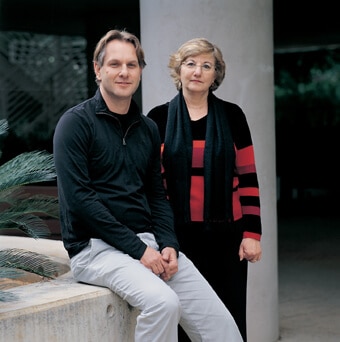Waste management is a matter of utmost importance everywhere, but inside cells it can be a matter of life and death. When a molecular garbage can, which is supposed to protect the cell from damage, overflows, it can cause disaster

Waste management is a matter of utmost importance everywhere, but inside cells it can be a matter of life and death. When a molecular garbage can, which is supposed to protect the cell from damage, overflows, it can lead to disaster. A study conducted at the Weizmann Institute of Science and published in the Journal of Cell Biology revealed that this is exactly the case with Batten disease, a rare but fatal disease that causes degeneration of nerve cells, the first signs of which appear in childhood. The discovery may lead to the development of ways to treat the disease.
In patients with Batten disease, an insoluble yellow pigment accumulates in the nerve cells in the brain which causes these cells to degenerate, and subsequently die. The patients gradually become disabled, lose their vision and mobility, and suffer from cognitive problems. They die young, usually no later than their early twenties. It has long been known that the disease is caused by a mutation in a gene called 3CLN, but the role of this gene in the cell was not known until now. In the new study, Weizmann Institute scientists discovered the role of the gene in the cell, thus providing an explanation for the molecular course of Batten's disease.
The research was carried out in the laboratory of Prof. Geoffrey Gerst from the Department of Molecular Genetics, by Rachel Kama and the post-doctoral researcher Dr. Vidhi Kanganti, in collaboration with Prof. Christian Ungerman from the Ossenberg University in Germany. All the experiments were done in yeast, but they are relevant to humans with Batten disease, because the gene corresponding to 3CLN in yeast has been preserved throughout evolution almost unchanged. In fact, the gene found in yeast is so similar to that of mammals that inserting a normal copy of 3CLN derived from mammals into yeast lacking the gene caused the yeast cell to return to normal activity.
The researchers showed that the yeast gene corresponding to 3CLN is involved in the transport of proteins in the cell. The gene activates a certain enzyme from the kinase family, and this enzyme, in turn, causes a series of molecular changes that control the transport of proteins. When a mutation occurs in the 3CLN gene of the yeast, the transport goes wrong. As a result, instead of reaching their destination, certain proteins accumulate in the lysosome, which serves as the cell's waste recycling system. When the lysosome fills with waste and overflows, the transmission of signals and other vital processes within the nerve cell are disrupted - which causes the slow but sure death of the nerve cell.
Much research is still needed until these findings are translated into healing methods for patients with Batten disease, but discovering the mechanism of action of the 3CLN is an important step in developing an effective treatment for the disease. Replacing the mutant 3CLN gene in all damaged nerve cells in the brain may be an almost impossible task, but it may be possible to take an indirect and simpler approach - for example, by giving a drug that will activate the kinase enzyme, independent of the defective gene.
For the scientific article: http://www.sciencedirect.com/science/article/pii/S1534580711004023

2 תגובות
If the patients die at a young age, then they are not enough to produce offspring. So how does the disease not go away by itself?
Good Morning
I would be happy to know what is the title of Mrs. Rachel Kama?
Dr.? professor? Maybe a lab worker? A scientist without a degree?